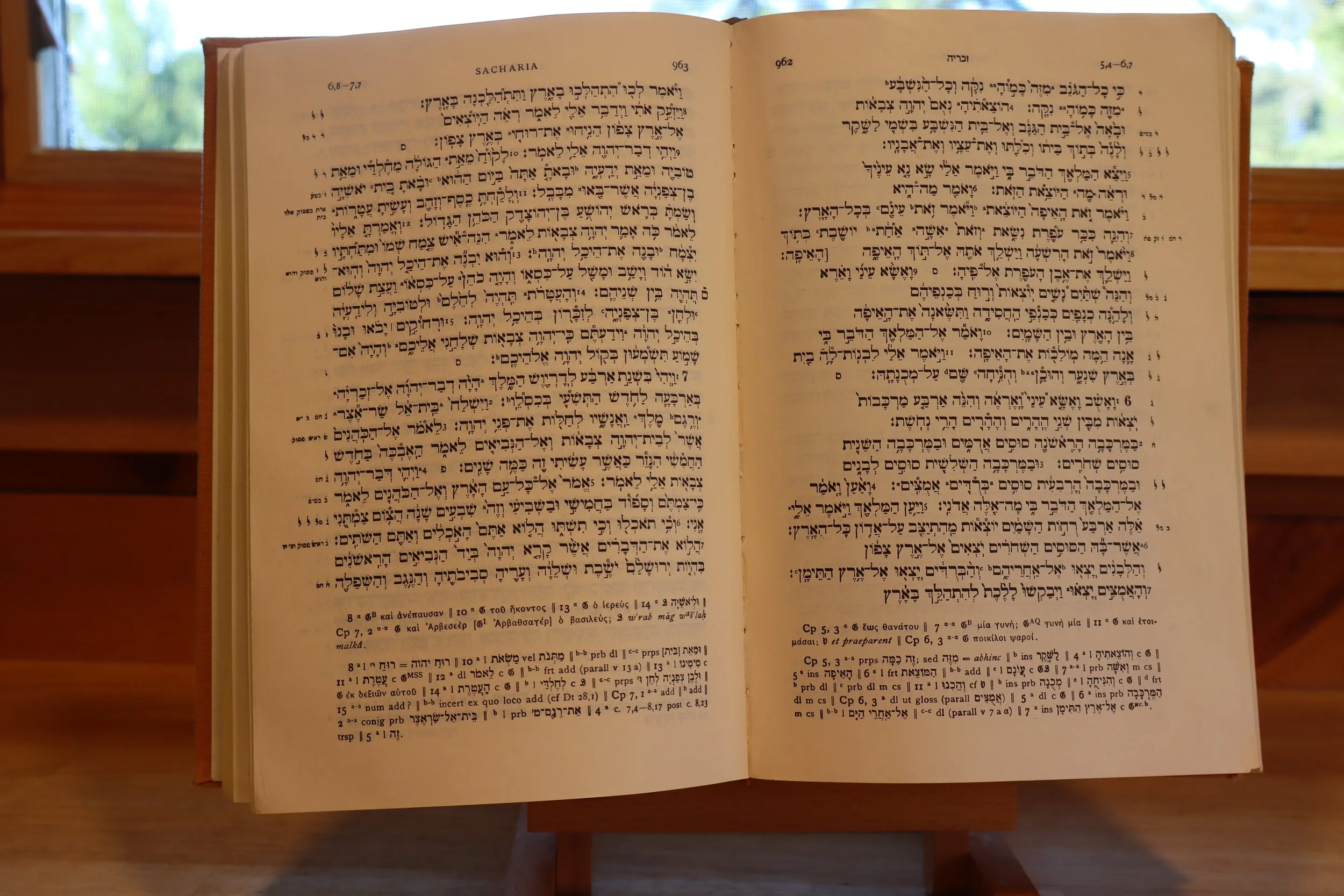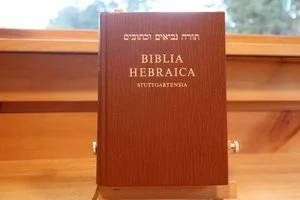Unveiling the Biblia Hebraica Stuttgartensia
The Biblia Hebraica Stuttgartensia (BHS) stands as a monumental achievement in the study of the Hebrew Bible, revered by scholars, clergy, and students alike. Published by the Deutsche Bibelgesellschaft (German Bible Society) in Stuttgart, this edition—released in fascicles between 1968 and 1976, with a complete volume in 1977—represents the fourth iteration of the Biblia Hebraica series, building on the legacy of Rudolf Kittel’s earlier works. What sets the BHS apart is its meticulous reliance on the Leningrad Codex, the oldest complete manuscript of the Hebrew Bible, dating to 1008 CE, housed in St. Petersburg. This fidelity to a single, authoritative source makes it a touchstone for understanding the Masoretic Text, the traditional Hebrew and Aramaic scriptures of Judaism (the Tanakh) and Christianity’s Old Testament.
Unlike efforts to reconstruct an "original" biblical text—a task deemed impossible due to the gaps in ancient manuscripts—the BHS embraces the Leningrad Codex as-is. Editors Karl Elliger and Wilhelm Rudolph, with Gérard E. Weil refining the Masoretic notes, preserved its quirks, noting deviations in a detailed critical apparatus at the foot of each page. This apparatus draws on diverse witnesses like the Dead Sea Scrolls, Samaritan Pentateuch, and ancient translations (Septuagint, Vulgate, Peshitta), offering scholars a window into textual variants without altering the base text. The result is a scholarly tool that balances tradition with critical inquiry, widely trusted across denominations for its reliability.
The BHS isn’t just a static reproduction. It subtly departs from the Leningrad Codex in its book order—moving Chronicles to the end, as in most printed Hebrew Bibles, rather than before Psalms—and adds markers like samekh (ס) and peh (פ) to denote section breaks. Its compact yet readable format, especially in later editions like the 2020 Compact Hardcover, makes it a practical companion for intense study. The Masoretic annotations, both small (parva) and large (magna), provide a treasure trove for those decoding the text’s pronunciation, grammar, and chanting rhythms, rooted in centuries of Jewish scribal tradition.
For linguists, the BHS reveals Hebrew’s nuances—like the gender fluidity of רוּחַ (ruach, spirit) or the poetic license in Genesis 1:24’s וְחַיְתוֹ־אֶרֶץ (vəchayto-’eretz, "and His beast of the earth"). For translators, it’s the bedrock of modern Bible versions. And for the curious, it’s a bridge to the ancient world, preserving a text that has shaped faith and culture for millennia. As the Biblia Hebraica Quinta (BHQ) emerges to succeed it, the BHS remains a testament to the enduring quest to understand scripture in its most authentic form.
The Biblia Hebraica is one of the most widely used and respected editions of the Hebrew Bible (Tanakh) in the academic, religious, and theological communities. Its prominence is due to its careful textual scholarship, critical apparatus, and historical accuracy, making it a valuable resource for anyone serious about studying the Hebrew Scriptures. Below are some reasons why the Biblia Hebraica is an excellent book:
Textual Accuracy and Reliability
The Biblia Hebraica series offers a highly accurate representation of the traditional Hebrew Masoretic Text (MT). The Masoretic Text is the authoritative text of the Hebrew Bible for Judaism, and it forms the foundation of most modern Bible translations.
The current editions of Biblia Hebraica—such as the Biblia Hebraica Stuttgartensia (BHS) and the Biblia Hebraica Quinta (BHQ)—are based on the Codex Leningradensis, the oldest complete manuscript of the Hebrew Bible, dated to 1008 CE. The editors carefully preserved the text, ensuring that it remains faithful to the ancient tradition while making it accessible to modern scholars and students.
Critical Apparatus
One of the key features that sets the Biblia Hebraica apart from other Hebrew Bibles is its critical apparatus. This tool provides textual variants from different ancient sources, such as:
The Dead Sea Scrolls (2nd century BCE–1st century CE)
The Samaritan Pentateuch
Ancient translations like the Septuagint (Greek), Targum (Aramaic), Peshitta (Syriac), and Vulgate (Latin)
The critical apparatus allows readers to see where the text varies across these ancient manuscripts, giving insight into the transmission and preservation of the Hebrew Bible over time. This feature is especially valuable for students of textual criticism and for anyone interested in understanding how different versions of the text have developed.
Having these textual variants can help give a deeper understanding to the text. Often the variants do not contradict the Masoretic text, but shed light on how the ancients understood it.
Scholarly Endorsement
The Biblia Hebraica is a preferred text in academic institutions, seminaries, and theological schools around the world. It is frequently used in Hebrew courses and required for biblical studies programs. Scholars and translators rely on it for producing accurate translations and conducting in-depth research on the Hebrew Scriptures.
For those interested in serious biblical study, owning a copy of the Biblia Hebraica allows you to engage with the same text and tools used by leading biblical scholars and theologians.
Enhanced Study Tools
Modern editions of the Biblia Hebraica come with additional features to aid study:
Masoretic Notes: Preserved from the medieval scribes (Masoretes), these notes provide important details on how to read and interpret the text.
Annotations: Helpful annotations provide explanations of textual variants These textual variants do not necessarily contradict the Masoretic tradition, but often shed light on the text to provide a deeper understanding of the Bible by allowing you to see how ancient translators read the text.
Indexes and Cross-References: These tools help navigate the text and cross-reference related passages within the Hebrew Bible. If you purchase the Reader's Edition of the Biblia Hebraica, instead of having textual variants on the bottom, there will be definitions for Hebrew words. Personally I would rather have the variants, but having the definitions can be helpful for those who are beginning to learn Hebrew. But since it is not a totally comprehensive list of definitions, one might want to use the Davidson Lexicon to look up words, rather than having words be defined on the bottom of the page.
Language Learning Resource
For students of Biblical Hebrew, the Biblia Hebraica is an indispensable resource. Reading directly from the Hebrew text helps learners develop a deeper understanding of the language’s grammar, syntax, and vocabulary. The critical apparatus also introduces students to the challenges of translating ancient texts and interpreting subtle differences between manuscripts.
The Biblia Hebraica is an great tool for anyone serious about studying the Hebrew Bible. Its textual accuracy, comprehensive critical apparatus, and scholarly credibility make it a valuable resource for theologians, academics, clergy, and students alike. By purchasing the Biblia Hebraica, you gain access to centuries of textual tradition and modern scholarship, allowing you to explore the depths of the Hebrew Scriptures with confidence and precision.


